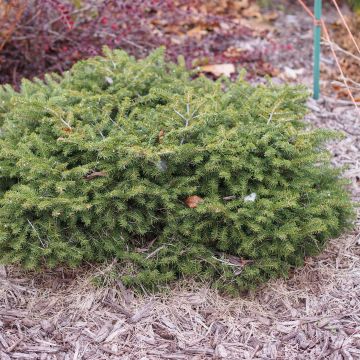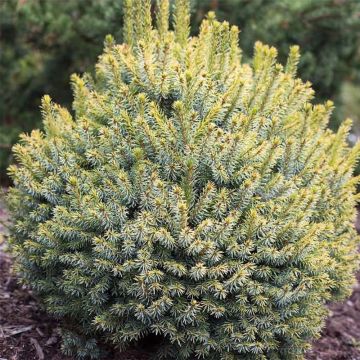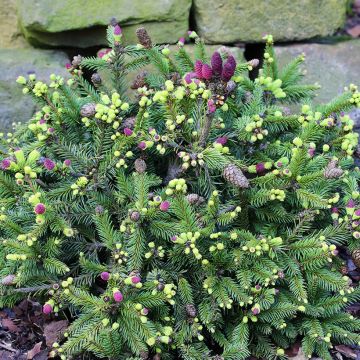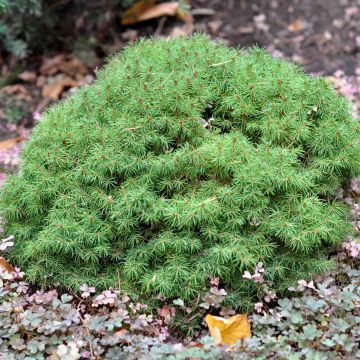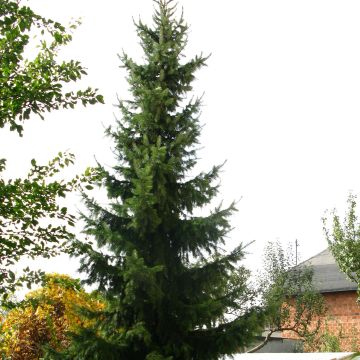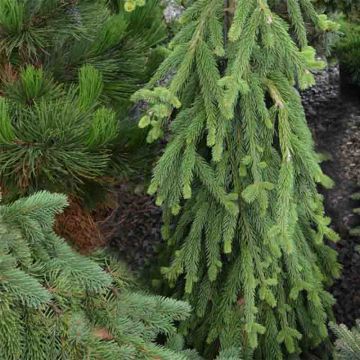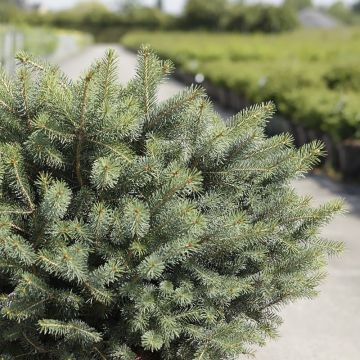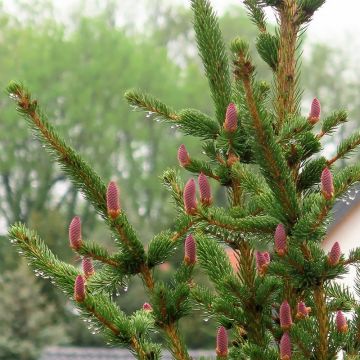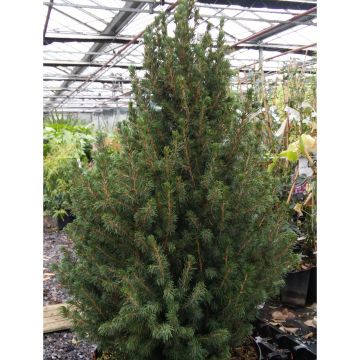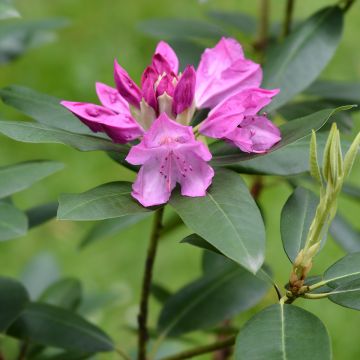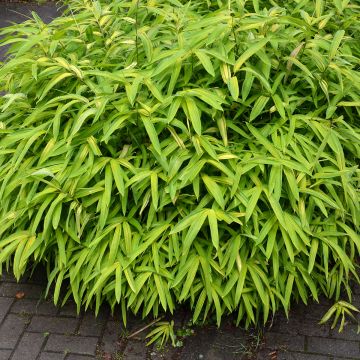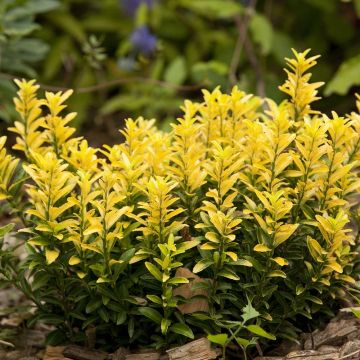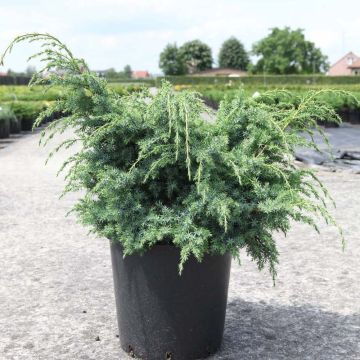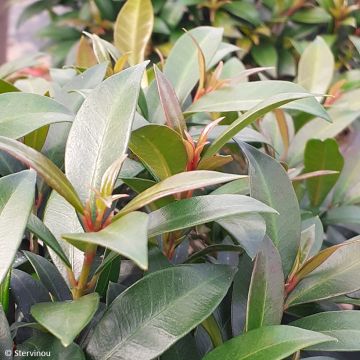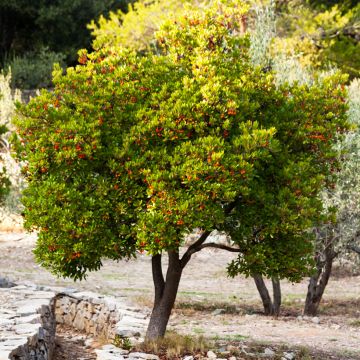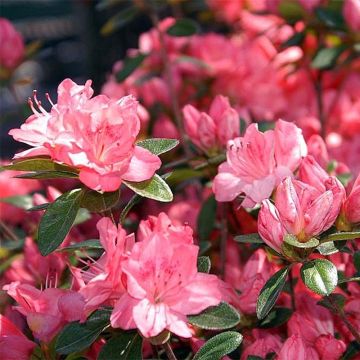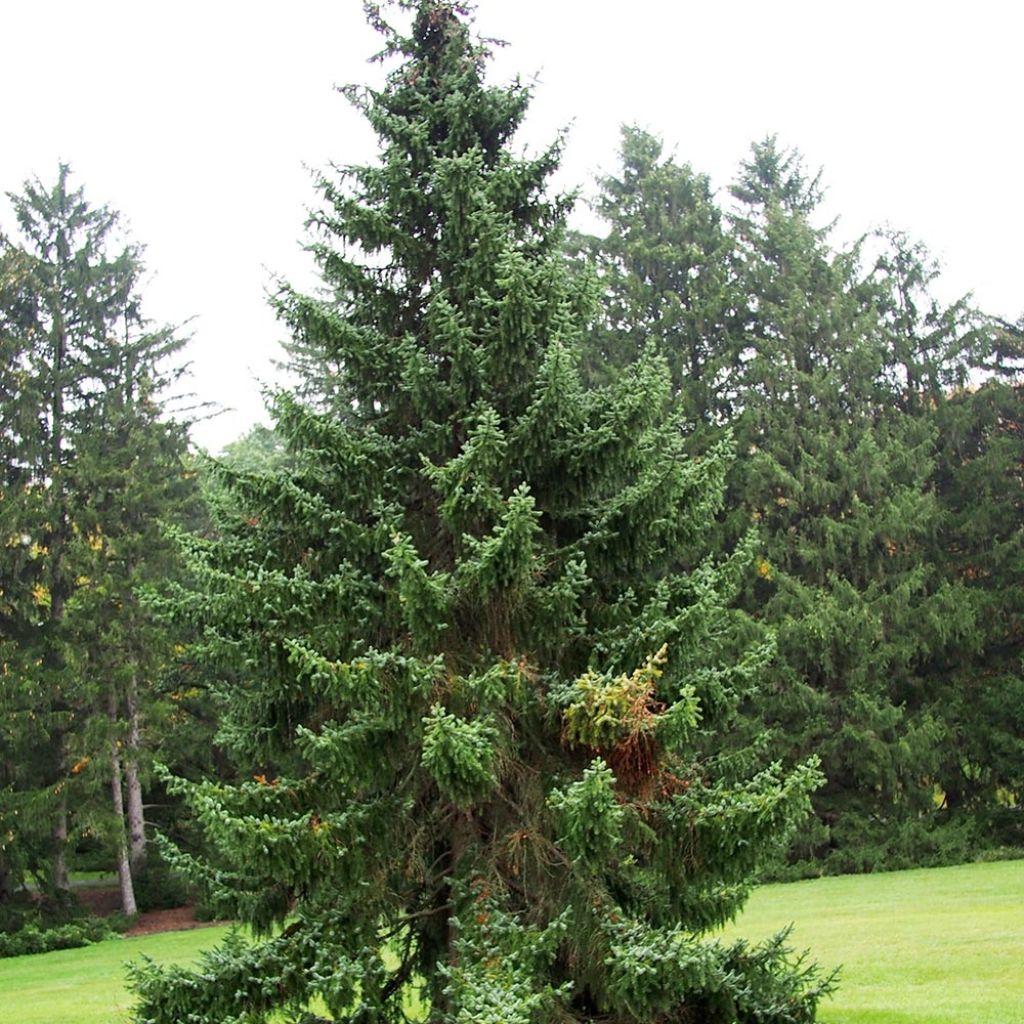

Picea omorika - Serbian Spruce
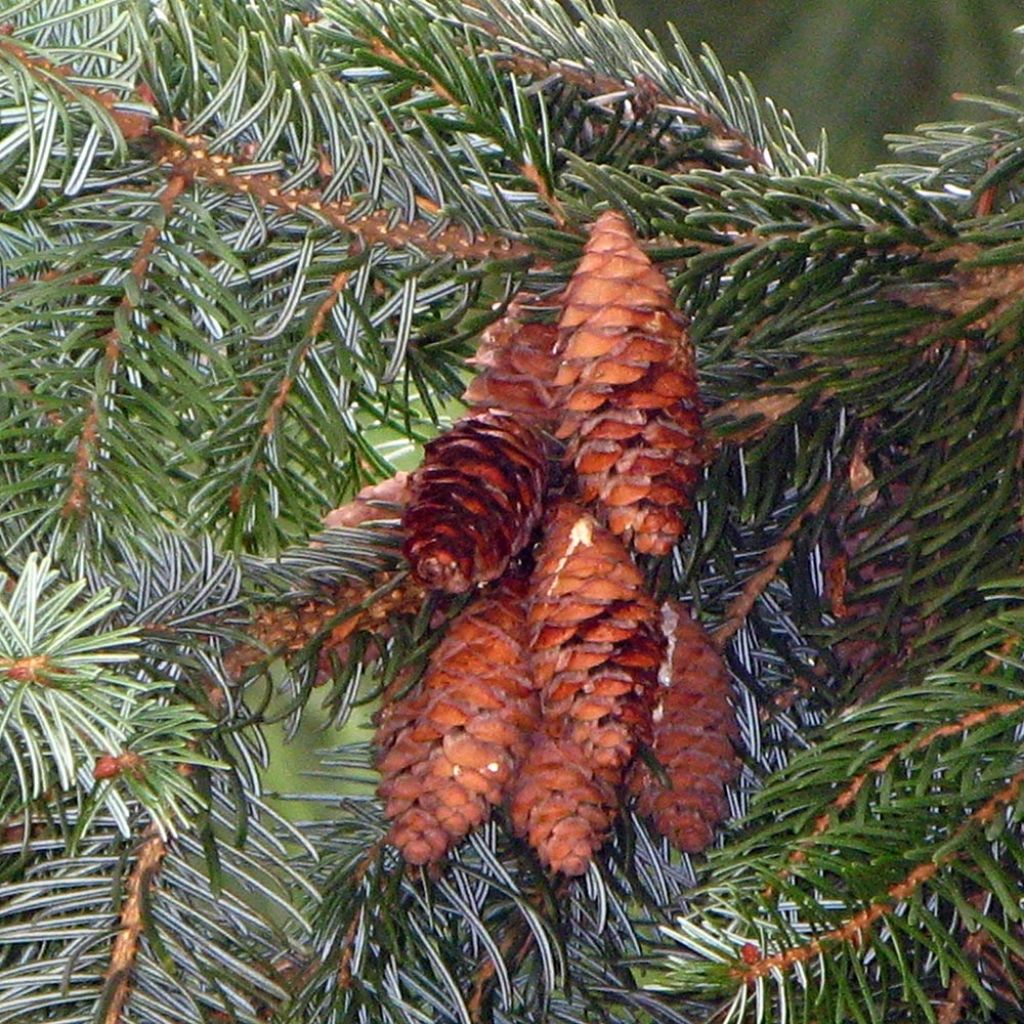

Picea omorika - Serbian Spruce
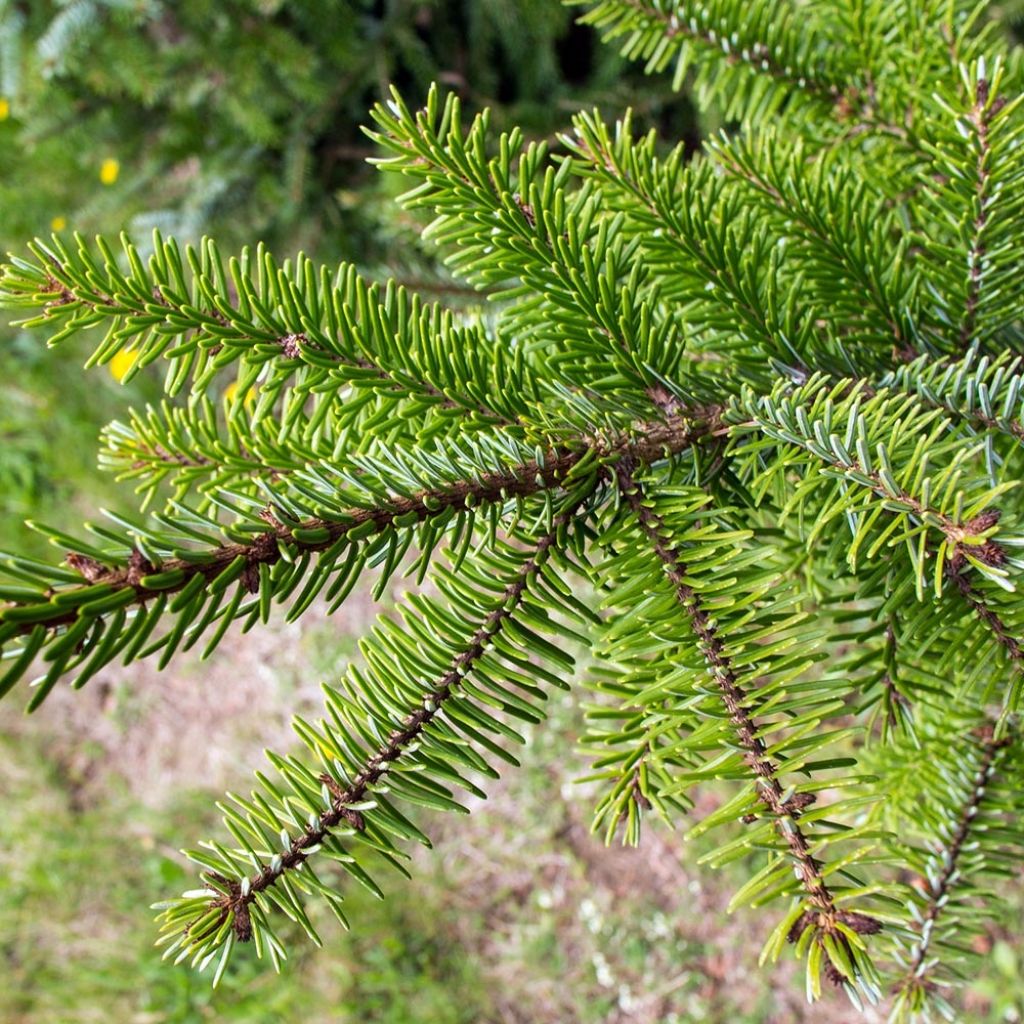

Picea omorika - Serbian Spruce
Picea omorika - Serbian Spruce
Picea omorika
Serbian Spruce
This item cannot be shipped to the selected country
Delivery charge from €5.90
Delivery charge from €5.90
More information
Schedule delivery date,
and select date in basket
This plant carries a 24 months recovery warranty
More information
We guarantee the quality of our plants for a full growing cycle, and will replace at our expense any plant that fails to recover under normal climatic and planting conditions.
From €5.90 for pickup delivery and €6.90 for home delivery
Express home delivery from €8.90.
From €5.90 for pickup delivery and €6.90 for home delivery
Express home delivery from €8.90.

Does this plant fit my garden?
Set up your Plantfit profile →
Description
Picea omorika or Serbian Spruce is a tall conifer with a distinctive slender and narrow habit. Its pendulous branches rise up at their ends, giving it a particularly graceful and animated appearance. The dense branches resemble small brushes, with dark green needles that have a silvery underside. They bear ornamental pendulous cones, which are beautifully purple-violet before ripening. Thanks to its naturally narrow shape, this majestic tree does not require pruning. However, it should be given space, either in small groups or as a border in a large garden. Very hardy, it adapts to any well-drained and moist soil, and thrives in sunny locations.
The Serbian Spruce is a plant belonging to the pine family, native to Bosnia and Serbia. It is a rare species, endemic to the Drina Valley (in Western and Eastern Serbia), although it can also be found in Bosnia and Herzegovina. In its natural environment, which is often harsh, this tree can reach a height of over 30 metres (98 feet), and has a narrow pyramidal habit with pendulous branches. This conifer is very tolerant of different soil conditions and can withstand pollution. Its growth rate is moderate. In our climate, it will reach a height of around 20 metres (66 feet) with a spread of about 3 metres, depending on the growing conditions. The branches are covered with flattened needles, arranged in dense brushes, and have an aromatic resin scent. They are dark green on top and have 2 white bands on the underside, giving the foliage a silvery appearance. This monoecious conifer has inconspicuous purple male and female flowers. They are followed by pendulous cones that are about 5cm (2in) long and particularly decorative: initially a very original purple-violet colour, they turn brown when mature.
The Serbian Spruce deserves to be more widely planted in gardens throughout Europe. Thanks to its ease of cultivation, unique personality, and imposing presence, it is a perfect plant for large spaces. It thrives in many situations, tolerates urban pollution, and adapts to various climates, as long as the soil is well-drained. It looks impressive when planted alone or in groups of 3. Due to its shallow root system and vulnerability to strong winds, it should not be planted too close to buildings. The true graphic qualities of conifers naturally stand out in the design of a contemporary garden, which prefers the aesthetics of shapes, silhouettes, and textures over the fleeting beauty of flowering plants. These plants, with their reassuring permanence, provide lasting structure to a flowerbed, define pathways, and border terraces, easily replacing the strong presence of trimmed boxwood or holly. They also pair well with heathers or ground-cover plants such as aubrieta, Cerastium, and shrubby salvias, as well as flowering shrubs. The key is to play with volumes and colours.
Report an error about the product description
Picea omorika - Serbian Spruce in pictures
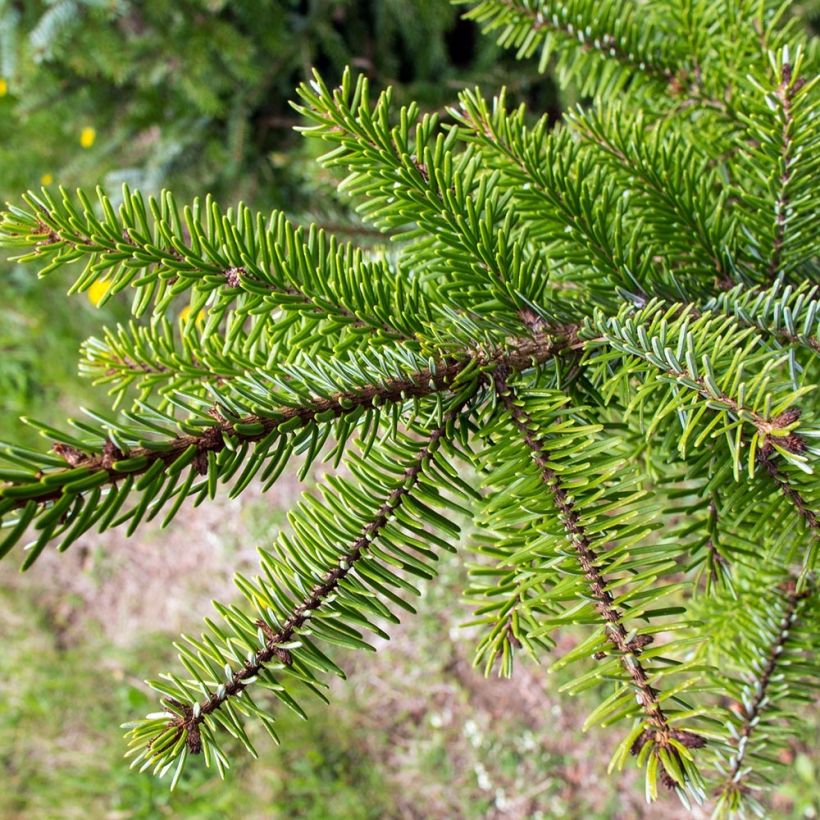

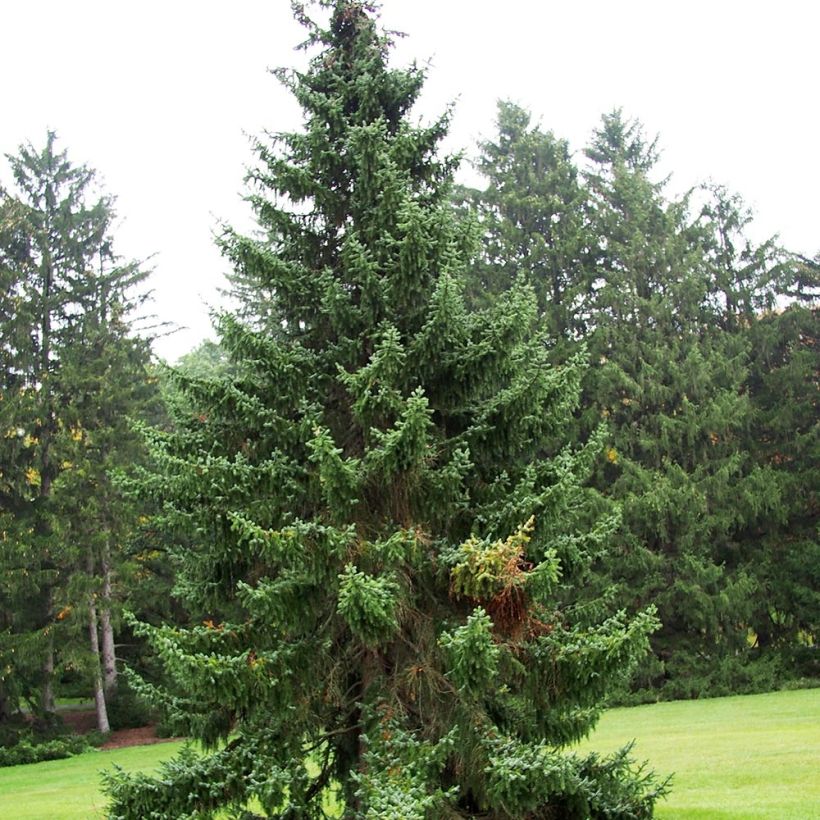

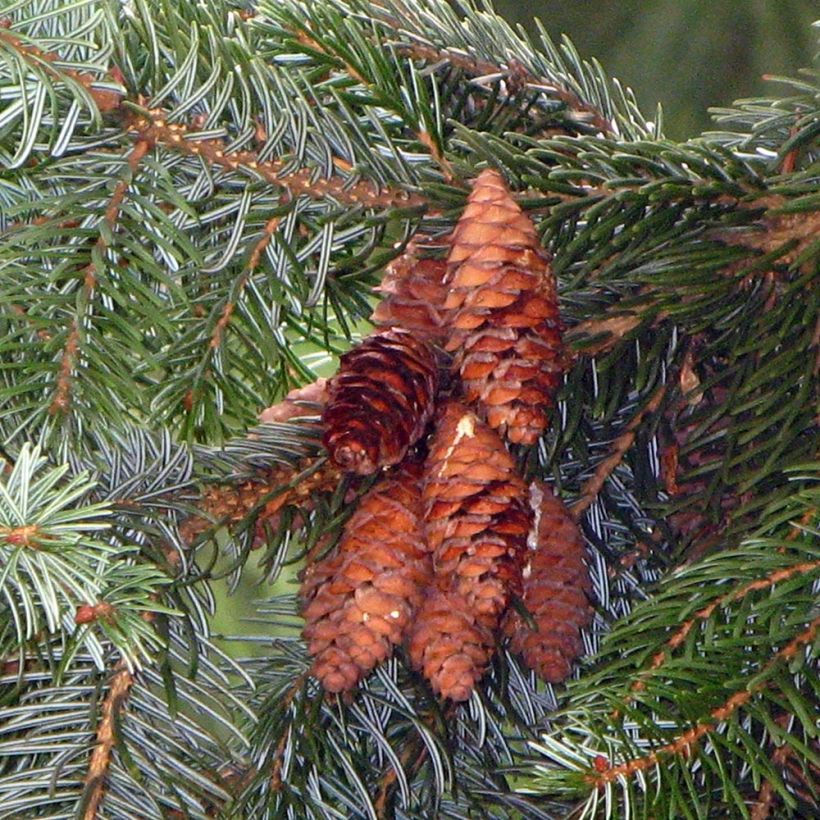

Plant habit
Flowering
Foliage
Botanical data
Picea
omorika
Pinaceae
Serbian Spruce
Eastern Europe
Other Picea
Planting and care
Picea omorika should be planted from September to November and from February to June in ordinary, well-drained soil, moist or dry, preferably fertile, even limestone. Sandy, humus-rich or rocky soil will be perfectly suitable. Choose a preferably sunny or semi-shaded location, sheltered from prevailing winds, at a good distance from buildings. Soak the root balls well before planting. Add organic amendment at planting and water generously in the first few years, and in case of prolonged drought. Apply a special conifer fertilizer every year in April and cultivate the soil in summer. This very hardy conifer (up to -30°C (1°F) at least) however dislikes heavy, waterlogged soils in winter. Pruning is not necessary.
Planting period
Intended location
Care
-
, onOrder confirmed
Reply from on Promesse de fleurs
Evergreen shrubs
Haven't found what you were looking for?
Hardiness is the lowest winter temperature a plant can endure without suffering serious damage or even dying. However, hardiness is affected by location (a sheltered area, such as a patio), protection (winter cover) and soil type (hardiness is improved by well-drained soil).

Photo Sharing Terms & Conditions
In order to encourage gardeners to interact and share their experiences, Promesse de fleurs offers various media enabling content to be uploaded onto its Site - in particular via the ‘Photo sharing’ module.
The User agrees to refrain from:
- Posting any content that is illegal, prejudicial, insulting, racist, inciteful to hatred, revisionist, contrary to public decency, that infringes on privacy or on the privacy rights of third parties, in particular the publicity rights of persons and goods, intellectual property rights, or the right to privacy.
- Submitting content on behalf of a third party;
- Impersonate the identity of a third party and/or publish any personal information about a third party;
In general, the User undertakes to refrain from any unethical behaviour.
All Content (in particular text, comments, files, images, photos, videos, creative works, etc.), which may be subject to property or intellectual property rights, image or other private rights, shall remain the property of the User, subject to the limited rights granted by the terms of the licence granted by Promesse de fleurs as stated below. Users are at liberty to publish or not to publish such Content on the Site, notably via the ‘Photo Sharing’ facility, and accept that this Content shall be made public and freely accessible, notably on the Internet.
Users further acknowledge, undertake to have ,and guarantee that they hold all necessary rights and permissions to publish such material on the Site, in particular with regard to the legislation in force pertaining to any privacy, property, intellectual property, image, or contractual rights, or rights of any other nature. By publishing such Content on the Site, Users acknowledge accepting full liability as publishers of the Content within the meaning of the law, and grant Promesse de fleurs, free of charge, an inclusive, worldwide licence for the said Content for the entire duration of its publication, including all reproduction, representation, up/downloading, displaying, performing, transmission, and storage rights.
Users also grant permission for their name to be linked to the Content and accept that this link may not always be made available.
By engaging in posting material, Users consent to their Content becoming automatically accessible on the Internet, in particular on other sites and/or blogs and/or web pages of the Promesse de fleurs site, including in particular social pages and the Promesse de fleurs catalogue.
Users may secure the removal of entrusted content free of charge by issuing a simple request via our contact form.
The flowering period indicated on our website applies to countries and regions located in USDA zone 8 (France, the United Kingdom, Ireland, the Netherlands, etc.)
It will vary according to where you live:
- In zones 9 to 10 (Italy, Spain, Greece, etc.), flowering will occur about 2 to 4 weeks earlier.
- In zones 6 to 7 (Germany, Poland, Slovenia, and lower mountainous regions), flowering will be delayed by 2 to 3 weeks.
- In zone 5 (Central Europe, Scandinavia), blooming will be delayed by 3 to 5 weeks.
In temperate climates, pruning of spring-flowering shrubs (forsythia, spireas, etc.) should be done just after flowering.
Pruning of summer-flowering shrubs (Indian Lilac, Perovskia, etc.) can be done in winter or spring.
In cold regions as well as with frost-sensitive plants, avoid pruning too early when severe frosts may still occur.
The planting period indicated on our website applies to countries and regions located in USDA zone 8 (France, United Kingdom, Ireland, Netherlands).
It will vary according to where you live:
- In Mediterranean zones (Marseille, Madrid, Milan, etc.), autumn and winter are the best planting periods.
- In continental zones (Strasbourg, Munich, Vienna, etc.), delay planting by 2 to 3 weeks in spring and bring it forward by 2 to 4 weeks in autumn.
- In mountainous regions (the Alps, Pyrenees, Carpathians, etc.), it is best to plant in late spring (May-June) or late summer (August-September).
The harvesting period indicated on our website applies to countries and regions in USDA zone 8 (France, England, Ireland, the Netherlands).
In colder areas (Scandinavia, Poland, Austria...) fruit and vegetable harvests are likely to be delayed by 3-4 weeks.
In warmer areas (Italy, Spain, Greece, etc.), harvesting will probably take place earlier, depending on weather conditions.
The sowing periods indicated on our website apply to countries and regions within USDA Zone 8 (France, UK, Ireland, Netherlands).
In colder areas (Scandinavia, Poland, Austria...), delay any outdoor sowing by 3-4 weeks, or sow under glass.
In warmer climes (Italy, Spain, Greece, etc.), bring outdoor sowing forward by a few weeks.

































